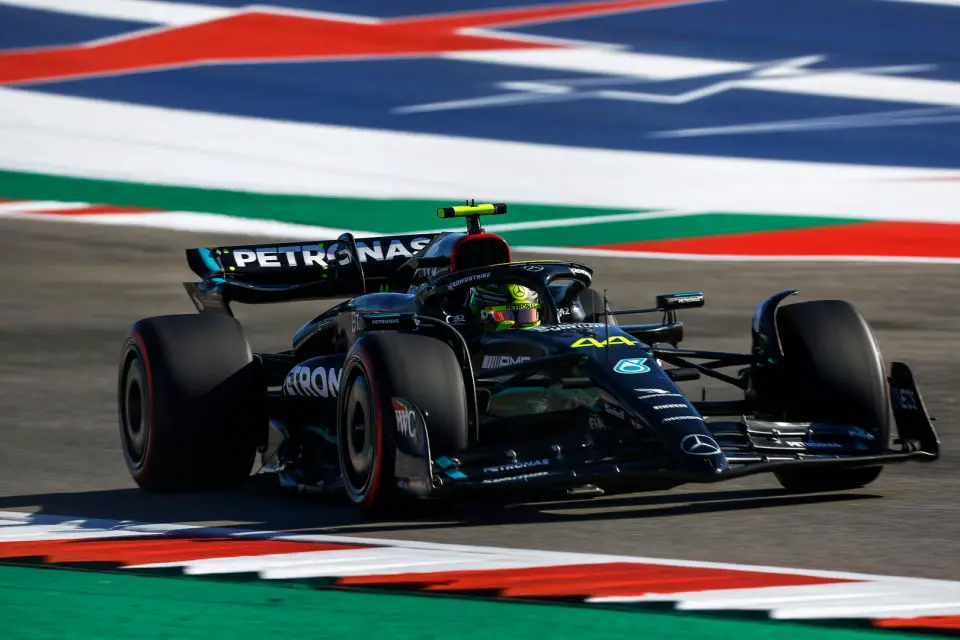Excessive Skid Block Wear Leads to Disqualification of Hamilton and Leclerc at US Grand Prix
In a surprising turn of events at the United States Grand Prix, both Lewis Hamilton and Charles Leclerc faced disqualification due to excessive skid block wear. This issue, pivotal in the world of Formula 1, led to their loss of P2 and P6 positions following post-race inspections by the FIA.
Key Takeaways:
- Disqualifications of Hamilton and Leclerc: Following the United States Grand Prix, Lewis Hamilton and Charles Leclerc were disqualified for excessive wear on their skid blocks, causing them to lose their P2 and P6 positions. The FIA’s random checks on four cars revealed that their skid blocks did not comply with F1’s technical regulations.
- The Role and Rules of Skid Blocks: Skid blocks, or skid plates/pads, made of Jabroc wood, are crucial for protecting the car’s floor and maintaining safety standards. They prevent cars from being too low to the ground, a rule introduced after Ayrton Senna’s tragic death. F1 regulations require the plank to be at least 1 cm thick, with a minimum acceptable wear limit of 9mm.
- Historical Context and Technical Details: The practice of attaching titanium blocks to the wood plank, resulting in sparks, is both for spectacle and protection. The rule, clarified in Article 3.5.9 e) of the 2023 F1 technical regulations, was first violated by Michael Schumacher in 1994, leading to his disqualification from the Belgian Grand Prix.

The incident at the United States Grand Prix has brought the importance of skid blocks in Formula 1 to the forefront. These components, often unnoticed by casual viewers, play a vital role in the safety and regulation of the sport. Made from a durable wood material called Jabroc, skid blocks run along the bottom of the car from front to back. Their primary purpose is to safeguard the car’s floor from damage when it encounters kerbs or bumps at high velocities.
Moreover, the skid blocks have a dual purpose. They not only protect the car but also enforce a safety standard that prevents the vehicles from being excessively low to the ground. This rule was introduced in 1994, following the tragic death of Ayrton Senna, underscoring the importance of safety in the sport.
Fans might be familiar with the sparks that fly from underneath F1 cars during races. These sparks are partially caused by titanium blocks attached to the wood plank. These blocks strike the ground when the cars bottom out, especially under strong downforce, protecting the wood from being completely worn away.
However, there are strict rules governing the wear of these skid blocks. According to the 2023 F1 technical regulations, the plank must maintain a minimum thickness of 9mm post-race to comply with safety standards. Any wear beyond this limit is considered a breach of the regulations, leading to potential disqualifications, as seen in the case of Hamilton and Leclerc.
This stringent regulation is not new to the sport. The first notable violation occurred in 1994 with Michael Schumacher at the Belgian Grand Prix. His disqualification for excessive skid block wear set a precedent for future enforcement of this critical safety rule.
In conclusion, the disqualifications of Hamilton and Leclerc at the United States Grand Prix serve as a stark reminder of the intricate balance between performance and safety in Formula 1. The role of skid blocks, while often overshadowed by more glamorous aspects of the sport, is crucial in maintaining the integrity and safety of these high-speed competitions.


